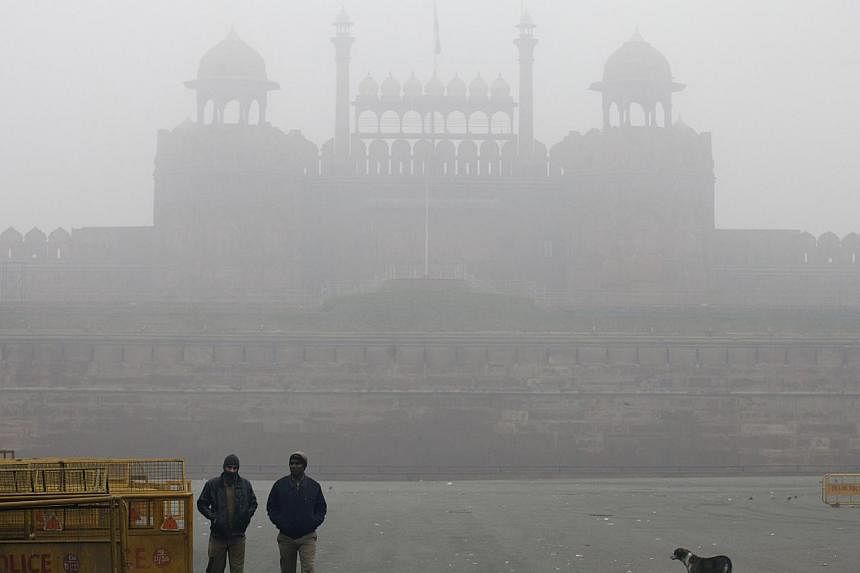NEW DELHI (AFP) - Torrents of thick black smoke billow up toward the smoggy skies as Kunti Desai feeds a coal-fired furnace to make tar for a Delhi road.
Ms Desai, whose hands and face are blackened by the soot, realises her job adds to the already noxious air in the city, which often outdoes Beijing as the most polluted in the world. But, she says, "this smoke brings me money".
"It is more important to feed and send my kids to school than to worry about the air," adds the mother-of-two, who earns US$40 (S$55) a month.
Delhi's air is a toxic cocktail made up of dust and fumes from thousands of industrial and construction sites and millions of vehicles, which climate-change champion Al Gore has called "a life or death issue".
The skyline is covered in a haze due to atmospheric dust blown in from deserts and mass crop burning in neighbouring states, as well as smoke from open fires lit by millions like Ms Dessai to keep warm or to cook food.
According to a joint study by Boston-based Health Effects Institute and Delhi's Energy Resources Institute, at least 3,000 people die prematurely every year in India's capital because of high exposure to air pollution.
Ms Desai's life provides a snapshot of the challenge Indian Prime Minister Narendra Modi faces ahead of a climate summit in Paris in December, where world leaders are to make pledges on cutting Earth-warming carbon emissions.
At a time when most homes and factories suffer frequent blackouts, Mr Modi is being urged to cut India's heavy reliance on coal.
World leaders have been steadily nudging India - the third-largest source of greenhouse gases - to announce its target, especially after the two top emitters, China and the United States, signed a pact in November.
US President Barack Obama added to the pressure in January, saying the world did not "stand a chance against climate change" unless developing nations like India reduce dependence on fossil fuels.
India has resisted committing itself to major emissions cuts, fearing they would compromise efforts to boost living standards in a country where more than a quarter of its 1.2 billion people is poor.
The government argues the burden should lie with industrialised countries, which have been accused of hypocrisy in heaping demands on poorer nations.
Arunabha Ghosh, head of the Delhi-based Council on Energy, Environment and Water, agreed India was not ready to set an emissions target like China as it could hurt the economy.
"The government's development dimension is not just rhetoric, it has real content. Aggressive renewable energy targets would make electricity unaffordable for the bottom 20 percent of households," Mr Ghosh told AFP.
"It's a dilemma that raises the question: who will bear the burden of these high costs?"
India aims to have 100,000 megawatts of solar power by 2022 from just 3,000 MW currently, and predicts the renewable energy industry could generate business opportunities worth US$160 billion in the next five years.
Mr Modi has promised to provide electricity to more than 300 million Indians currently without power through solar energy by 2019.
But he is also betting big on coal, a key source of greenhouse gas emissions, with plans to double production to one billion tonnes by 2019.
Currently 60 percent of the country's power comes from abundant coal, which studies show kills up to 115,000 Indians a year.

